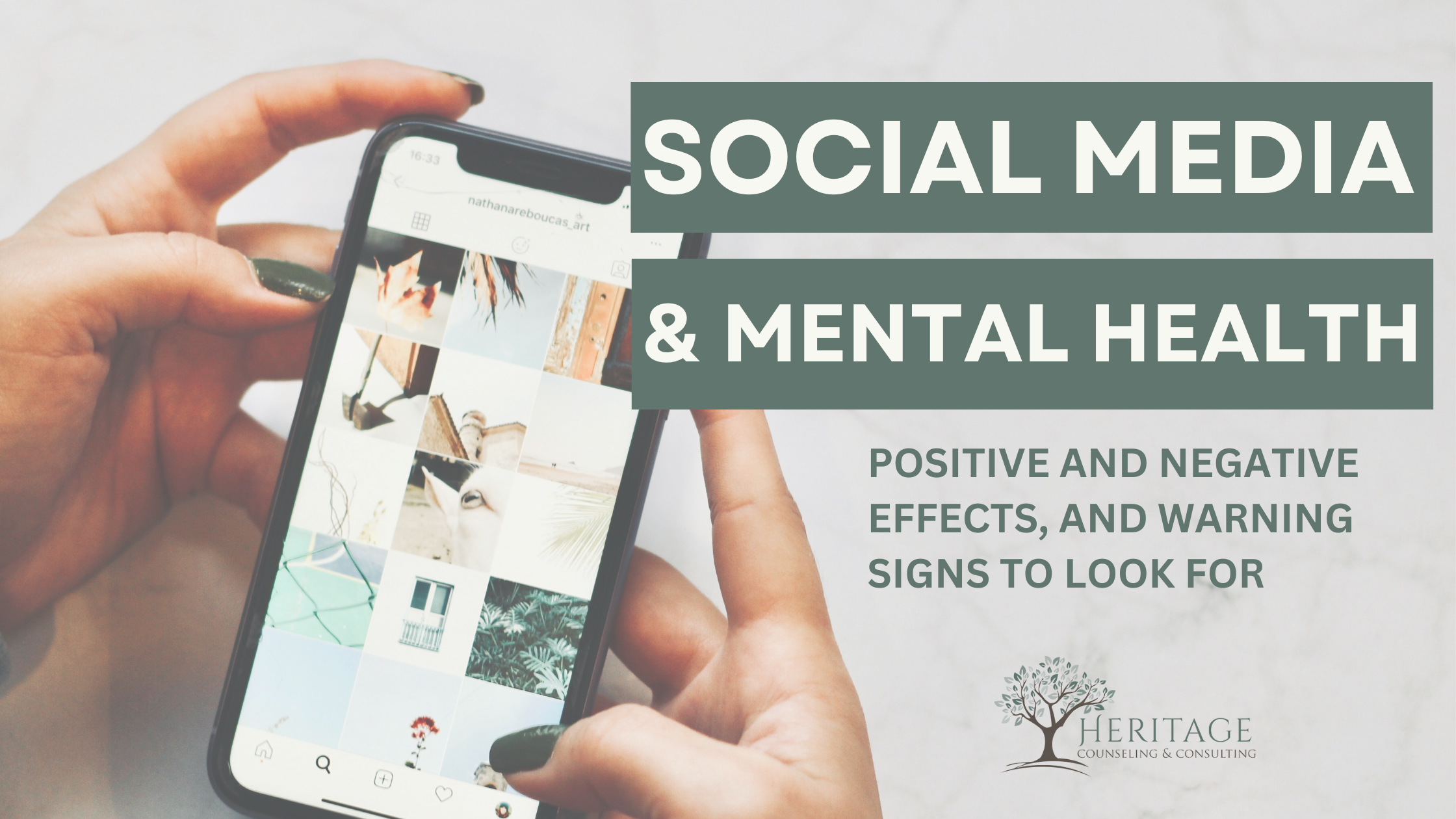Social Media’s Connection with Mental Health
With the advancement of technology and the wide use of the internet, social media has become a core aspect of the lives of individuals. In 2016, more than 90 percent of people aged between 18-49 reported using at least one Social Media platform over the last 12 months (1). People use Social Media to explore and express their thought, emotions, as well as self-identity, yet the implication of the use of Social Media is still not well understood. There are various reasons why it is difficult to have a comprehensive understanding of the impact of Social Media use on mental wellness, and one of the main reasons is that there are too many areas and moving parts of this topic to consider. There are many different Social Media platforms and applications that offer different things to their users (2). Also, the users of Social Media are not a collective entity, but they are all individuals with different personalities and use Social Media in different ways (3).
Positive and Negative Effects of Social Media
With Social Media use becoming more popular and more frequent among individuals, focusing only on the frequency or duration of Social Media use might be too simplistic. People who use Social Media do not share a hivemind, but rather individuals who have their own personalities and use Social Media in different ways.
Different Types of Social Media Use
Passive use: Usually defined as scrolling, browsing, and looking at content from others without posting their own content or leaving comments on other’s content
Active use: Usually defined as chatting, sharing content, updating status, and commenting on others’ content (4).
Impact of Different Types of Social Media Use
Since there are two different types of Social Media use, then is it possible that there is a type of Social Media use that is “better” than the other? Researchers have focused on assessing the independent associations between active versus passive Social Media use and depressive and anxiety symptoms.
Passive: Researchers have found that passive Social Media use is associated with more anxiety and depressive symptoms, and time spent on Social media also had a stronger relationship with emotional distress (4).
Active: Researchers have found that active Social Media use did not have a significant relationship with depressive symptoms and did not lead to less depressive symptoms, but has a greater association with higher levels of social anxiety (5).
Impact of Different Social Media Platforms
When a person uses Social Media, it is common that the user does not only use one single platform. The use of multiple Social Media platforms and platform-swinging is very common among users. There are many function overlaps between those Social Media platforms, such as allowing them to connect with friends, and they are very clear about what each platform is for. Therefore, the users engage in platform-swinging for relationship management and self-presentation gratification. Each different platform allows its users to use their functions to fulfill their needs (6).
It was found that different types of Social Media platforms can also have different psychological impact on a diverse audience, and researchers found that:
Individuals who used a higher number of different social media platforms reported more anxiety symptoms, depressive symptoms, total alcohol consumption, and drug use.
Facebooks: associated uniquely with depressive symptoms
Snapchat: associated uniquely with substance abuse.
Instagram: Was not associated with any measures of psychological functioning.
Twitter: Was not associated with any measures of psychological functioning (7).
Impact of Social Media Use on People with Social Anxiety
We now realize the correlation between Social Media use and social anxiety symptoms, but we are not certain of the direction of the correlation: does Social Media use cause social anxiety symptoms, or are people with social anxiety symptoms more likely to spend more time on Social Media? Also, some researchers are asking whether Social Media is helping people with social anxiety by providing an alternative way of connecting with people without face-to-face interaction.
Researchers found that individuals with high levels of social anxiety and low ego strength will be more likely to use the internet as a medium for self-regulation to regulate their social fears(8). It was also found that having the online chat before the face-to-face chat significantly reduces the anxiety of face-to-face interactions for individuals with social anxiety when they are asked to interact with someone they have never met before.
However, study findings suggest that compulsive media use significantly triggers social media fatigue, which later results in elevated anxiety and depression. Fear of missing out (FOMO) also indirectly predicts compulsive social media use (9).
Signs Social Media May be Unhealthy For You & How Social Media Can be Beneficial For You
To most, living is not merely about existence, but about a well-lived life. Therefore, the lives of humans are not just for being but for well-being. Well-being is often defined as happiness, and it is not only about short-term pleasure, but a concept that captures both short- and long-term happiness. Thus, overall life satisfaction is assessed on the frequent experiences of positive factors and the infrequent experience of negative factors. On the other hand, a sense of belonging is one of the fundamental needs of human beings. Most of the time, humans need to form social bonds and prevent the collapse of current relationships to have a sense of wellness. In this aspect, there are two motivative components to a sense of belonging: to seek connectedness with others and to avoid social isolation (10). The sense of connectedness is a positive evaluation process for individuals who can form and maintain social connections and relationships, which makes the individual experience positive effects such as happiness. Social isolation, on the other hand, is often viewed as the antithesis of connectedness and often refers to being ignored or excluded with or without explicit declarations. Social beings, including humans, are especially sensitive to detecting or anticipating social isolation because they tend to avoid the deprivation of interpersonal relations or group membership. It was found that brief experiences with social isolation activate the pain matrix of neural systems that are shared by the same affective component of physical pain. Thus, the lack of social bonds can be detrimental to the sense of well-being (11).
People can use Social Media for both of the components of social belonging, and yet from the previous literature reviews, the use of Social Media sometimes helps people to find connections, but other times hinders people’s mental wellness. Some studies even found that people are feeling more lonely when using Social Media than when they are not (12). This creates a paradoxical relationship between Social Media and mental well-being: why is social media, a social platform making people lonelier? One possible explanation for this paradoxical relationship is that, in terms of maintaining a sense of connectedness, Social Media use can augment social interactions by enabling individuals to extend and to maintain social relations, thus promoting the reward pathway in the brain. However, Social Media use does not likely replace social interactions, and sometimes may even take away time spent on other valuable social activities such as face-to-face communications without generating the benefits of social interaction such as emotional support, and thus fails to help individuals to avoid feeling a sense of social isolation. Simply put, when individuals use Social Media to extend or maintain their existing social relationships, the use can help promote connections and wellness(10). However, when individuals use social media to replace face-to-face social interactions and/or to avoid a sense of social isolation, then Social Media can become problematic and hinder an individual's sense of well-being. Social Media use can mainly contribute to increasing the efficiency of connection, but may not be able to build emotional bonds. This phenomenon is well described by the title “alone together” (13).
As discussed earlier, Social Media can include social networking sites such as Twitter and Facebook, Social Media Smartphone applications such as Grindr and Snapchat, content-sharing sites such as YouTube, blogs such as Tumblr, and instant messaging. The use of Social Media allows people to create different images of themselves via photos, blogs, and profiles, which may or may not be the same as how they perceive themselves, or how others perceive them, in the offline world. Therefore, Social Media can serve to help individuals to explore their sense of self via the management of various social identities.
Conclusion
The findings in many studies have established the correlation between Social Media use and individuals’ mental well-being. It was found that different types of Social Media use can impact the user’s mental wellness, and different Social Media platforms also affect different areas of the mental well-being of their users. Even though some studies indicate that the use of Social Media provides alternative ways for people with social anxiety to connect with other people, other studies suggest that Social Media can also provoke social anxiety among users. Some of the mediating factors of Social Media use are also identified, such as the feeling of envy and fear of missing out.
The effect of Social Media use is paradoxical. Even though people use Social Media most of the time for communication to substitute for face-to-face communication, this type of media use often does not provide the same result as face-to-face communication. People who try to use Social Media end up feeling even lonelier than before. Yet, when Social Media is used correctly, it can reinforce a sense of social connection and even break barriers for people with disabilities to access important information and provide a sense of connectedness.
If you are looking for guidance in creating, implementing, or maintaining healthy Social Media use in your relationships, please reach out to Heritage Counseling & Consulting at 214-363-2345. We have a talented team of mental health professionals that can support your goals and help you take actionable steps to create healthy Social Media use.
References

